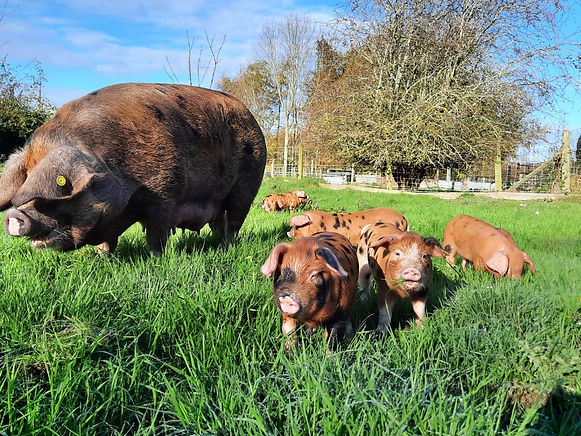Odd one out!
We had an express lambing this year! Usually our lambing is spread over 8 weeks, with long gaps between arrivals. However, this year was completely different. On the morning of our first potential day of lambing, there was a set of twins awaiting us in the shed. Later that day there were more twins, and a ewe with a nice single lamb. The lambs kept on coming, and just 11 days later we had all 10 ewes and 17 lambs happily grazing out in the field.
This rush of lambs meant that we had quite a full lambing shed for a few days. After the lambs are born, each new little family spends a day or two in a pen in the shed, so we can keep an eye on them and make sure mum and babies are suitably bonded before turning them out into the fields. There is nowhere nicer than a lambing shed in the evening. The floor covered in deep, clean straw. Pens around the sides full of contented ewes and lambs, with the remaining ewes snoozing in the middle of the shed. And the lovely smell of silage!
Fidget’s lambs arrived early on in the week, and she was instantly transformed into a devoted mother. She has twins – a boy and a girl (who will hopefully stay to join the flock). The girl is a cheeky little thing, who can often be found standing no her mother’s back whilst they walk around the field. This works fine until Fidget sees a human approaching with a bucket of food, and charges full tilt towards them, dropping her offspring in a heap on the way. Nothing comes between Fidget and her food!
Not every birth ends happily at lambing time, and even the smallest flock can expect to lose some lambs. One of our ewes sadly gave birth to a large stillborn lamb. She is a big ewe, with plenty of milk, and was very keen to have a lamb.
It is common practice to foster spare lambs onto ewes that have lost their lamb, or even give a second lamb to a ewe that has only given birth to one. Lambs will generally do much better if reared by another ewe rather than on the bottle, and it reduces the costs and work involved too.
Not having any spare lambs ourselves, we found a nearby farm with lambs going spare, (triplets taken from their mothers as they could not rear all three) and brought one home to foster on.
The new (white) lamb was dressed in a coat made from the stillborn lamb’s black skin, and popped in with his new mum. Mum sniffed him, decided he smelt like her baby should, and that was it – the happy little foster family was formed. We did wonder if she would mind the sudden colour change when we took his black coat off after 48 hours, but she didn’t seem to notice. The rest of the flock did, though, when we put them in the field – the whole flock turned to stare at this new, odd looking arrival. Mum stared back at them, as if daring them to comment, and they all quietly turned back to their grazing. The white lamb is fully accepted into the flock now, and leaps and bounds around the field with the rest of the lambs, although he really does stand out a bit!




